#museo de arte carrillo gil
Explore tagged Tumblr posts
Text
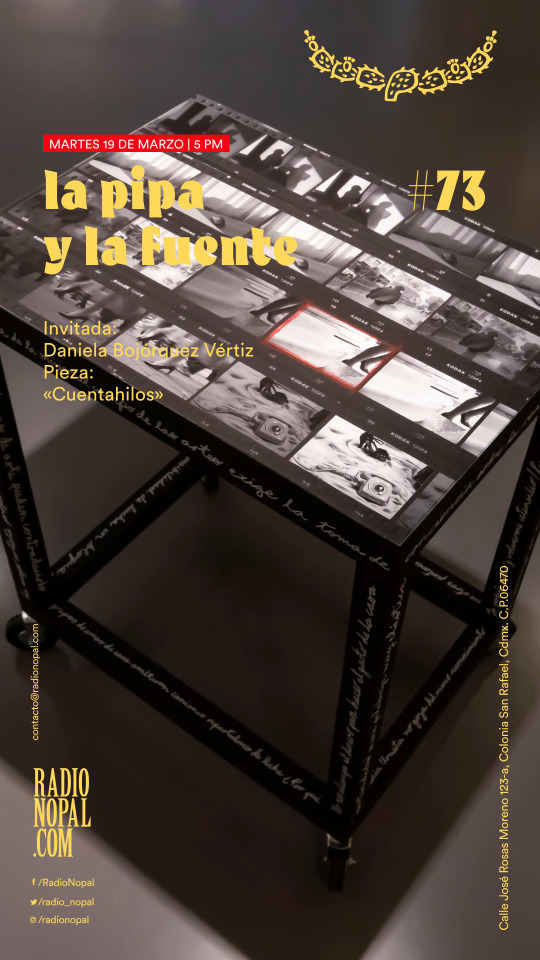
La pipa y la fuente #73: Daniela Bojórquez Vértiz – Pieza: «Cuentahilos» (2023, estructura de madera, escritura a mano con tinta blanca, impresión fotográfica sobre papel algodón, marca con lápiz de cera rojo, ruedas, vidrio, 97 x 75 x 55 cm), que se exhibió en la exposición colectiva «Coordenadas móviles: Redes de colaboración entre mujeres en la cultura y el arte (1975-1985)», que tuvo lugar en el Museo Carrillo Gil (@museocarrillogil), del 30 de septiembre de 2023 al 25 de febrero de 2024. | Invitada: Daniela Bojórquez Vértiz (@jacarandghost) - Conduce: Jesús Pacheco Vela (@peach_melba). | Transmisión: martes 19 de marzo, 2024, 17:00-18:00 h por Radio Nopal
#la pipa y la fuente#daniela bojórquez vértiz#cuentahilos#fotografía#photography#coordenadas móviles#museo de arte carrillo gil#carrillo gil#jacarandghost#peach melba#radio nopal#revista fem#revista artes visuales#años 80
1 note
·
View note
Text

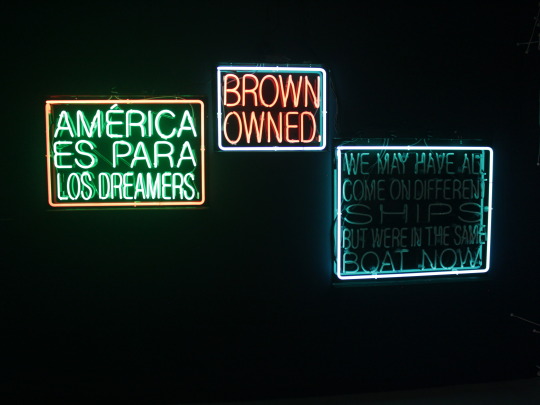
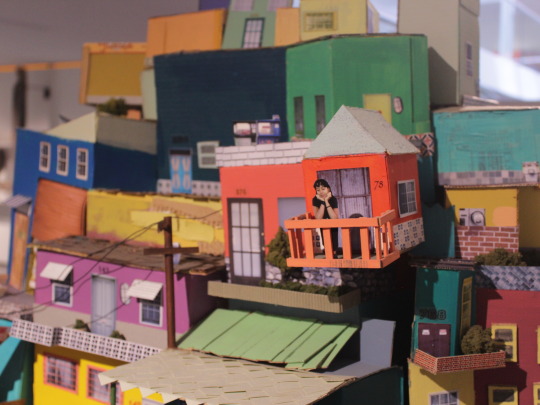

Fotos de la exposición Construyendo puentes / Building bridges, Museo de Arte Carrillo Gil (2018).
4 notes
·
View notes
Text


Ni origen ni torbellino
Ni origen ni torbellino presenta una revisión de la colección del Museo de Arte Carrillo Gil* surgida de una reflexión crítica en torno a la figura moderna del hombre como constructor del mundo. Esta idea se contrapone a perspectivas en las que lo humano no ocupa el centro, sino que se integra en un sistema interdependiente con los entornos de los que forma parte. La muestra explora el diseño y la (des) organización de la Tierra más allá del alcance del control humano, enfatizando la autonomía de los procesos orgánicos, geológicos y cósmicos.
Esta exposición tiene dos inicios posibles; en el primero, un collage de Alvar Carrillo Gil actúa como portal hacia una dimensión cósmica. La transformación matérica del azul se desintegra hacia lo que parece un hoyo negro, no sólo como una ruptura física en la pintura, sino como un quiebre en la percepción misma, que invita a imaginar qué existe más allá de los bordes. En el segundo, el acto humano de creación se presenta a través de las imágenes de El arquitecto y El pintor en reposo de Diego Rivera. La representación hegemónica que centra al hombre como “creador del mundo” se ha manifestado reiteradamente a lo largo de la Historia del Arte, apelando a la ficción del hombre —desde una visión esencialista— como genio, provisto de una inteligencia privilegiada y proveniente de un origen superior que lo deslinda de las potencias creadoras de la naturaleza.
El recorrido, que no tiene un inicio específico, se compone de seis categorías que aluden a diferentes relaciones entre la espacialidad y el acto de hacer mundos. Estas categorías —arquitectura, no arquitectura, arquitectura no humana, paisaje, lo cósmico y lo material— fungen como marcos conceptuales que permiten abordar la complejidad de otros horizontes posibles. El título sugiere que ni el progreso lineal, con un origen definido, ni el torbellino de la incertidumbre con sus intrincadas rutas, representan caminos absolutos.
*Ni origen ni torbellino dialoga con obras de otros acervos de la Red INBAL y tres más de artistas invitadxs.
Museo Carrillo Gil
Notas:
Chiquillatequiero
Newsanmiguel
INBA
Picotazopolitico
FMpromotion
LaJornada
0 notes
Text
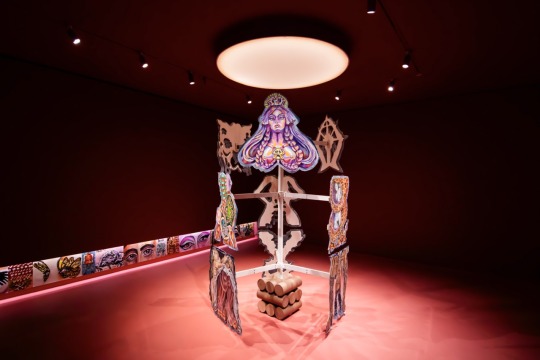
Nicole Chaput (A '19) Embalsamada con picante The Museo de Arte Carrillo Gil Av. Revolución 1608, San Ángel, Álvaro Obregón, 01000 Ciudad de México, CDMX, Mexico February 10th–April 21, 2024
1 note
·
View note
Text

1 note
·
View note
Text
ENRIQUE CASTREJON at Bermudez Projects, Los Angeles
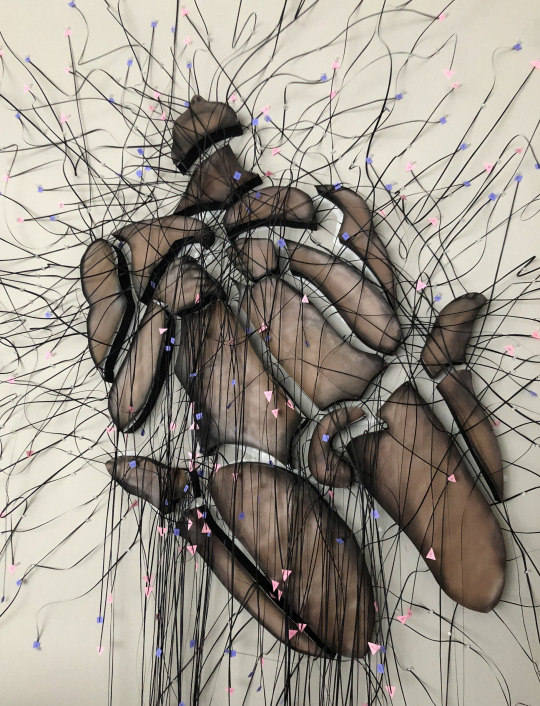
ENRIQUE CASTREJON Mind Heart Rectum
September 11–October 30, 2021 1225 Cypress Avenue, Los Angeles
_________
With six monumental body sculptures, Enrique Castrejon’s new exhibit “Mind Heart Rectum” puts the Bermudez Projects art gallery in Cypress Park at the crossroads of the human response to cancer, aging, masculinity, and the pandemic.
Yes, it’s a startling title, but Castrejon is trying to direct our attention to our minds, bodies, and souls. The CalARTs grad, whose work has been shown internationally, fills the main gallery with works he says helped him get through the continued decline of his father’s health due to dementia, heart disease, and rectal cancer. The feeling of helplessness and uncertainty Castrejon felt was processed through these works to understand these diseases and come to terms with their debilitating progression. In addition, the anxiety and the unexpected Covid infection of his older sister only propelled Castrejon into his work to ease the stress and uncertainty of this infection during this dark period of time.
“I don’t think I could have made it through that period without those pictures,” he says. “The pictures are about measurement and measurement is my form of control.”
For Castrejon, measurement is the act of assigning numbers to phenomena according to a rule. And much of his work gives us data surrounding and filling-in familiar representations, until the data almost obliterates the form.
Castrejon says his work usually begins with a found design: “Images of beauty, queer bodies, HIV, war, death, destruction, and tragic events,” taken from magazines, newspapers, art catalogues and online sources, and then broken into smaller identifiable geometric shapes. Castrejon says:
“I write measurements or other definable data or units along the side of the shapes to question and describe what I see from the parts of the whole.” And in doing so, “I challenge our perceptions of what is real, forcing us to think critically about information that is constantly changing, bombarding our everyday lives through images selected in directed advertisements, pop-culture sources, editorials and news stories.”
Each body sculpture in “Mind Heart Rectum” is measured in inches and calculated angle degrees; and each length along these fragmented geometric shapes is measured in (x inches) and all angles are measured in calculated angle degrees. With the use of a protector and calculator, Castrejon uses the equation (360°- x°=y°) to uncover the outside angels of each shape accordingly. And, then he uses thin black strips of paper as line indicators that help draw out those units outside the bodies creating a chaotic web or aura made from a rational quantitative process. Measured units are written at the ends of these black strips of paper allowing the viewer to come closer to the bodies, explore the bodies, and find the units’ point of origin within the body. Finally, the bodies are covered with strips of researched data and information concerning dementia, heart disease, and rectal cancer.
Castrejon describes his artistic goal as “ordered chaos.” The artist finds that even the kind of tragic event that words sometimes fail to describe can still be measured by art, and his methodical approach allows him to represent the difficult imagery of disaster, war, and chaos in an analytical manner.
As a senior research coordinator at the LA Gay and Lesbian Center – where he works with researchers studying the effects of drug use on the immune systems of sexually active Black and Latinx men – Castrejon has long explored HIV/AIDS and sexuality. But this new body of work hits closer to home.
“Mind Heart Rectum” examines Castrejon’s personal reaction to the dementia, heart disease, and rectal cancer that afflicts his Mexican immigrant father. As a caregiver for his father along with his mother and sisters, Castrejon saw how the diseases changed his father’s body and mind, and he believes by creating these works and making the private public, we can inspire people to learn more about their bodies and chronic illness, and help them talk about it without stigma.
The massive sculptures – the largest being 9 feet tall – are intentionally created to represent young bodies. Painted in varying hues of brown and black to represent Black and Latinx men, Castrejon wants to re-enforce that his father’s illness did not just appear due to his old age but through contributing factors and behaviors in his younger years. Like so many other men, including many Latinos, his father didn’t want to admit he was in pain, and wouldn’t seek medical care. Making it worse were language barriers, financial concerns, lack of awareness to these illnesses, and a lack of prevention messages.
Castrejon says, “I hope “Mind Heart Rectum” can be a positive experience that encourages introspection and reflection, and uncovers a silver lining in loss.”
Enrique Castrejon (b. 1972) was born in Taxco, Guerrero, Mexico. He received his BFA from Art Center College of Design in Pasadena; and earned his MFA from the California Institute of the Arts. His work has been displayed in venues including the LA Municipal Art Gallery; the Leslie-Lohman Museum in New York, the Mexican Cultural Institute in Washington, D.C.; Museo de Arte Carrillo Gil in Mexico City; Museo de las Artes in Guadalajara, Mexico; and the Preview Art Fair in Berlin. He is the recipient of a COLA 2019 individual fellowship grant from the City of Los Angeles. Castrejon’s works are held in private and public collections, including the AltaMed Art Collection, Los Angeles; the Los Angeles County Museum of Art; and the Museum of Latin American Art, Long Beach, California. The artist lives and works in Los Angeles.
PRESENTING SPONSOR
Fraijo Family Foundation
Additional support provided by:
MORALES + MORALES
2 notes
·
View notes
Text
Una crítica a “El cubo de Rubik, arte mexicano en los años 90″
A propósito de una publicación exclusiva para l@s patreons de ODAC, relacionada con “El Cubo Rubik, arte mexicano en los años 90″; Patricia Martín, curadora y escritora de arte, decidió compartir su opinión sobre el libro. Este texto presenta dicha crítica de manera íntegra.
La historia del arte en México en la década de los años 90 es también mi historia. Por eso no pude evitar leer el libro de Daniel Montero desde un lugar personal y desde ese mismo lugar quisiera lanzar algunas precisiones. Montero tiene razón al decir que cuando se cuenta una historia “todos interpretan, falsean las versiones, acomodan sus dichos, se acuerdan de cosas diferentes.” Como ideóloga, creadora y directora de la Colección Jumex, tuve el privilegio de ser parte de quienes construyeron lo que Montero cuenta en su libro, y puedo decirte que esta narración me despierta lo mismo indignación que sospecha. Aquí voy con algunas de mis observaciones:
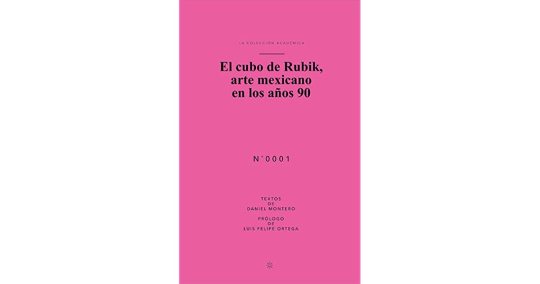
“El cubo de Rubik” vió la luz mientras Patrick Charpenel era director de la institución que financió dicha publicación. Me parece perverso que el libro se desprenda del estudio de una pieza de su colección personal, sobre todo cuando, como dice Montero, la curaduría nos enseñó que las piezas suben de valor cuando se monta pensamiento e ideología sobre ellas. No es extraño que esta investigación borre mi nombre de forma sistemática, como queriendo desaparecer el trabajo constante que durante casi 10 años realicé en Ecatepec, pensando y creando una colección y fundación que además de tener un valor artístico tenía para mí valor social con potencial para cambiar realidades. Me entristece que todo ese trabajo haya sido tirado por la borda para construir un proyecto de museo incongruente con la realidad de nuestro país. Me indigna que el dinero de un coleccionista como Eugenio López se utilice para validar el trabajo de un grupo de privilegiados que tiene prácticas excluyentes, misóginas, rapaces y casi “monopólicas.” A veces me abruma dimensionar los monstruos que yo misma ayudé a encumbrar. Definitivamente, uno nunca sabe para quién trabaja. Basta hacer una búsqueda rápida en Internet para descubrir los modos de proceder de Patrick, quien hoy sufre las consecuencias de gestionar el Museo del Barrio desde un lugar que es incoherente con las necesidades de las comunidades latinxs en Estados Unidos.
Sobra decir que la historia del arte en México en los 90 es más diversa y compleja de lo que el libro se atreve a enunciar, una investigación a fondo daría cuenta de que no todo se reduce a esos personajes y a esas instituciones: Patrick Charpenel, Jumex, Kurimanzutto, Cuauhtémoc Medina, Gabriel Orozco, El Carrillo Gil, Osvaldo Sánchez… Todos ellos aparecen como los artífices del sistema artístico actual en México, e independientemente de su incuestionable relevancia me parece que sus nombres eclipsan muchos otros, entre ellos el mío, y su labor es abordada de una forma parcial, sesgada y poco crítica.
Este libro tiene un tono apologético sobre algunos modos de ver, crear y comercializar el arte, y da cuenta de una genealogía en la que el autor mismo quiere montarse, un grupo al que quiere pertenecer. ¿No es el papel de los historiadores utilizar la ocasión de una publicación para articular una verdad plural desde la justicia? Me parece que Montero no hace esto último, pues de su “ajuste de cuentas” sólo ellos salen beneficiados y a muchxs otrxs se nos impone el silencio (puedo dar cuenta de algunas exposiciones mías que aparecen mencionadas en el libro, cuya autoría ha sido borrada. ¿A quién le convenía en ese momento borrar mi nombre de esta historia?, ¿por qué? No dejo de preguntarme si tal omisión es el seguimiento de una orden ex profeso).
Al respecto de estas omisiones, me parece indignante el tratamiento que se da al trabajo de las mujeres en la publicación de Montero. Raquel Tibol es la única teórica a la que se le reconoce la voz. El trabajo de las otras pocas mujeres que aparecen escritas es reducido, a veces ninguneado, y en casos como el de Minerva Cuevas su obra es validada como una “recomendación de Abraham Cruz Villegas y Daniel Guzmán”. Esto me parece gravísimo. Al respecto de las prácticas misóginas de este grupo, este texto me parece muy pertinente.
Todo esto da cuenta de una práctica que se sostiene en otro par de libros editados durante la gestión de Patrick Charpenel en Jumex en los que se deja a agentes importantísimxs fuera de la narrativa. El Cubo de Rubik se plantea como la búsqueda por llenar “un vacío documental y argumental sobre el arte hecho en México durante la década de los noventa”. Desde los argumentos que expongo, me parece que ese vacío es llenado por una versión que busca no sólo resanar huecos, sino callar las voces de quienes pudiéramos contar esta historia de forma diferente… y ni qué decir de las disidencias que no alcanzan a ser nombradas o vislumbradas desde el horizonte que plantea Montero. Éste es un texto que, como el mismo autor reconoce, va “sobre todo de la Colección Jumex en la Ciudad de México y la de Patrick Charpenel en Guadalajara”. Y ni siquiera esas historias se cuentan de forma justa, pues me parece inconcebible que se hable de Jumex sin hablar del trabajo que ahí realicé. Me enoja que las cosas se cuenten de esta manera, me molesta tener que hacer todo el tiempo este tipo de aclaraciones, pero si dejas que los otros te quiten la voz, entonces definitivamente no existes.
Patricia Martín.
2 notes
·
View notes
Text
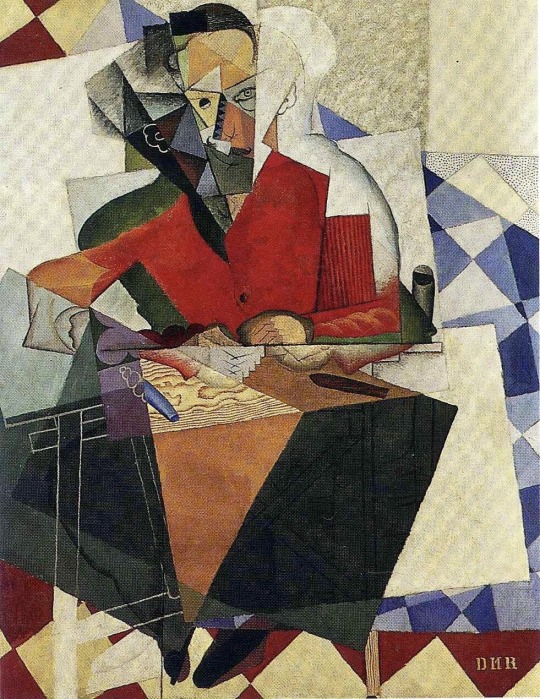
“El Arquitecto”
cubismo
óleo sobre lienzo,-(1914-15)
Museo de Arte Carrillo Gil
Por Diego Rivera,(1886-1957)
3 notes
·
View notes
Text
Yishai Jusidman
• Ciudad de México
• 1963, (56 años)
• Estudió en el Art Center College of Design (California) y en el New York Studio School of Drawing, Painting and Sculpture
• Expos: Museo de Arte Contemporáneo de Monterrey, Museo de Arte Carrillo Gil
• Línea de trabajo: reflexión sobre la propia práctica pictórica en la sociedad actual, revisando las preocupaciones clásicas de la misma
http://www.yishaijusidman.com/es/


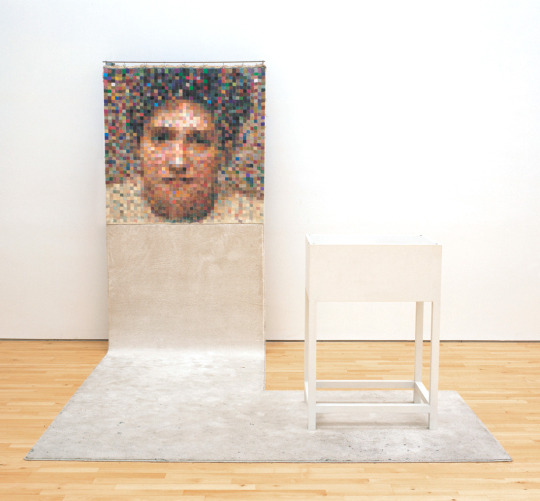
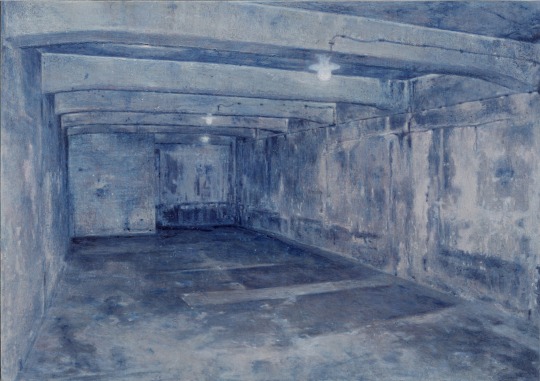
#yishai#jusidman#ciudad de mexico#mexico#america#1963#60#art center college of design california#studio school new york#pintura#pintor#espacio#persona
1 note
·
View note
Photo

Abraham Cruzvillegas (F ‘14) Abuses of Form Museo de Arte Alvar y Carmen T. de Carrillo Gil Av. Revolución 1608, San Ángel, Álvaro Obregón, 01000 Ciudad de México, CDMX, Mexico December 07, 2019 - November 01, 2020
2 notes
·
View notes
Photo
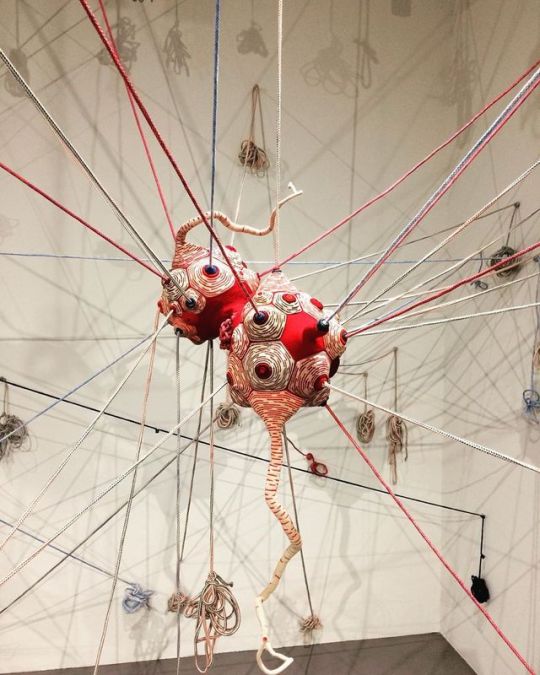
ZUMARIO #red #day #museocarrillogil #sound #art #museo #museum #arte #artist #gallery #culture #mexico #méxico #mexicocity #cdmx #travel #travelgram #traveller #travelphotography #picoftheday #pic #city #photography #photo #photographer #place #abstract (en Museo de Arte Carrillo Gil) https://www.instagram.com/p/BwtDLkslARx/?utm_source=ig_tumblr_share&igshid=1fjigi1gvj35w
#red#day#museocarrillogil#sound#art#museo#museum#arte#artist#gallery#culture#mexico#méxico#mexicocity#cdmx#travel#travelgram#traveller#travelphotography#picoftheday#pic#city#photography#photo#photographer#place#abstract
1 note
·
View note
Text
Semblanza
Ros Itzel Howes (Swansea, Gales, 2001)
Vive y trabaja en la Ciudad de México. Ros es una artista plástica en formación que trabaja en la interdisciplinariedad, los medios múltiples y el bioarte. Actualmente, estudia el 5to semestre de la carrera de Artes Visuales en la ENPEG “La Esmeralda”. Participó en la Mesa 3 ¿Cómo se derriban los cánones desde el feminismo en el arte y el diseño? en el marco del 25N en la Cátedra Rosario Castellanos (2020), y cursó el taller de Bioescultura en Biology Studio by Edith Medina (2021).
Ha expuesto colectivamente en Disecciones en Obra Gris (2022) y como parte del taller Reescritura, voz y recombinación por Vivian Abenshushan en el Museo Carrillo Gil (2021).
La investigación de Ros se encuentre entre las membranas de dicotomías psicológicas, biológicas y sexoafectivas a través de la relación entre lo interno y externo. Via la suciedad, la abyección, lo sensorial y carnalidad que conlleva existir en un cuerpo con órganos y comportamientos, Ros experimenta la estimulación sensorial y dentro de las líneas difuminables de lo grotesco y lo bello.
0 notes
Photo

🍗 by @elnorberto (en Museo de Arte Carrillo Gil) https://www.instagram.com/p/Cm3KDrLO3iS/?igshid=NGJjMDIxMWI=
1 note
·
View note
Text
(27)19°13'24.3"N 99°01'46.4"W
(3/3) Sobre encontrar/buscar lo que ya no está. (Aún esta)
Volcán del Teuhtli- Villa de Milpa Alta
(31/07/2022)
12km
Parte de la serie de talleres impartidos y diseñado para el programa educativo de la exposición “Colección Margarita Robles” en el Museo de Arte Carrillo Gil.
Territorio y defensa. Una historia sobre el origen y conformación de la geografía y sus políticas. Una caminata para hablar sobre la historia del Calpulli, a las haciendas, al ejido, a la tierra comunal y a la propiedad privada.
*
_











0 notes
Photo




Detalles (exposición colección Margarita Robles) _2022_ Museo de Arte Carrillo Gil
0 notes



